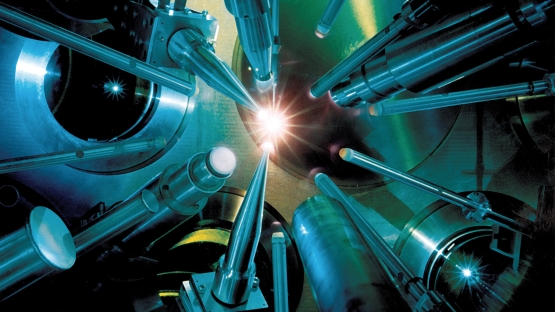The Coordinated Research Project (CRP) on “Pathways to Energy from Inertial Fusion: Materials beyond Ignition”, conducted by the IAEA from 2015 to 2019, brought together 18 research institutions from 13 Member States (Chile, Estonia, France, India, Japan, Poland, Republic of Korea, Russian Federation, Serbia, Singapore, Spain, Ukraine, Uzbekistan).
Through joint research programmes enabling participation and collaboration amongst institutions, industries and scientists, this CRP provided an assessment of the irradiation conditions relevant to target burning, material requirements, consequences and characteristic behaviours in pulsed, repetitively cycled Inertial Fusion Energy (IFE) systems.
It also represented the continuity of former highly successful projects. The IAEA has in fact a long history of nurturing international cooperation on fusion, and ever since the early 1970s, the IAEA has specifically promoted international research and exchange of information on IFE. These activities, which include Coordinated Research Projects (CRPs) “Elements of Power Plant Design for Inertial Fusion Energy” (2000–2004) and “Pathways to Energy from Inertial Fusion: An Integrated Approach” (2006–2010), have led to many publications. In addition, results of IFE research have been presented at IAEA technical meetings and published in the IAEA’s Nuclear Fusion Journal.
Within the framework of the CRP, thanks to experiments conducted at different facilities under the representative conditions expected at the reactor core components, significant progress was achieved in the three key focus areas: materials characterization, physics and target design, and facilities development.
- In materials characterization, results showed progress in understanding material behaviour under the extreme environment expected in future IFE reactors. The project provided the possibility for development and promising steps towards qualification of advanced candidate materials for future nuclear fusion reactors, namely nanostructured tungsten (W), heavy W alloys, double forged W and double forged WTa alloy, carbon nanotubes, diverse high-quality steels (ODS, AISI 316L stainless and Eurofer) for structural material, SiO2, fused silica and high-purity calcium fluoride, and SiC coatings. However, these studies have also demonstrated that no material is currently capable of withstanding the harsh conditions in the reactor first wall and final optics, and that new materials with improved mechanical and radiation resistance need to be conceived, designed and manufactured.
- In physics and target design, results from IFE target design and mass manufacturing methods have shown significant progress in the predictive capabilities of numerical tools, experimental techniques and target manufacturing technologies. Improved target design is directly linked to experience gained in practical fabrication, follow up tests proving good mechanical strength and thermal robustness to achieve high energy gains.
- In facilities development, results showed progress in target mass production and repeatable delivery into the reaction chamber of future IFE power plants. Filling, layering, characterizing, and placing of targets into the chamber by injection was demonstrated at a rate of 0.1 Hz (IFE power plants will consume around 1 million targets per day and at a rate of 10-20 Hz).
The research carried out through this CRP generated more than 100 scientific publications in peer-reviewed journals and numerous presentations in international and national scientific meetings. The final CRP results will be published in an upcoming IAEA-TECDOC and in a Special Issue of Matter Radiation at Extremes.
For further information related to this CRP, please see the CRP page






